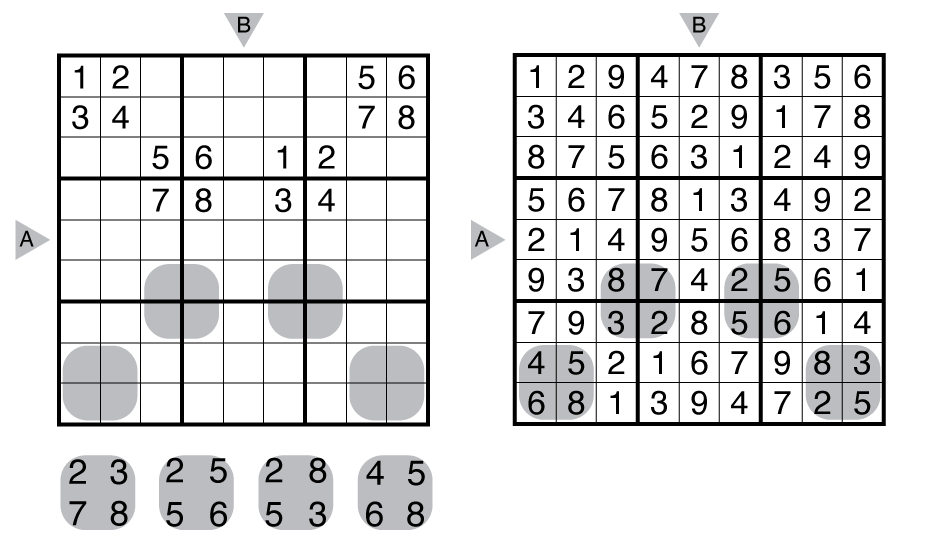Shape Sudoku R&I

Rules: Standard Sudoku rules (insert a number in the indicated range into each cell so that no number repeats in any row, column, or bold region). Also, there are some numbered shapes that must be put into the grid. Shapes can be rotated, but cannot be reflected.
Answer String: Enter the row/column marked “A”, followed by a comma, followed by the row/column marked “B”. Rows are entered from left to right and columns from top to bottom. This example has the key “214956837,723154869”.
(Brief) History of Shape Sudoku: Descended from Sudoku and (also loosely from) object placement puzzle thinking. Shape Sudoku was created by Thomas Snyder to provide a way to leave sets of numbers outside of a sudoku grid, including allowing for “empty” grids, with different logic then arising depending on the shape sets to get these numbers back into the grid. A simple version of Shape Sudoku, called Ship Sudoku using battleship fleets, was created by Thomas Snyder in 2007 for his first book of puzzles, Battleship Sudoku and the style was further generalized in the book Mutant Sudoku to allow more general shapes and more artistic themes.
History of this example: “Squares of Squares” was written by Thomas Snyder for an August 2013 post on this site.
Sources for Thermo-Sudoku: Follow this link for Shape Sudoku puzzles on this website. If you are new to this puzzle type, here are our easiest Shape Sudoku to get started on. More Shape Sudoku puzzles can be found in Masterpiece Sudoku Mix 8; another source (now out of print) is Mutant Sudoku.
Design rules for contributors: A Grandmaster Shape Sudoku will have a unique solution that can be reached by logic alone. Generally, a Grandmaster Shape Sudoku has a symmetric layout of numbers and shapes or a visually interesting theme for the shapes that does not need symmetry. Given numbers should generally not appear in the grid on cells covered by shapes.
